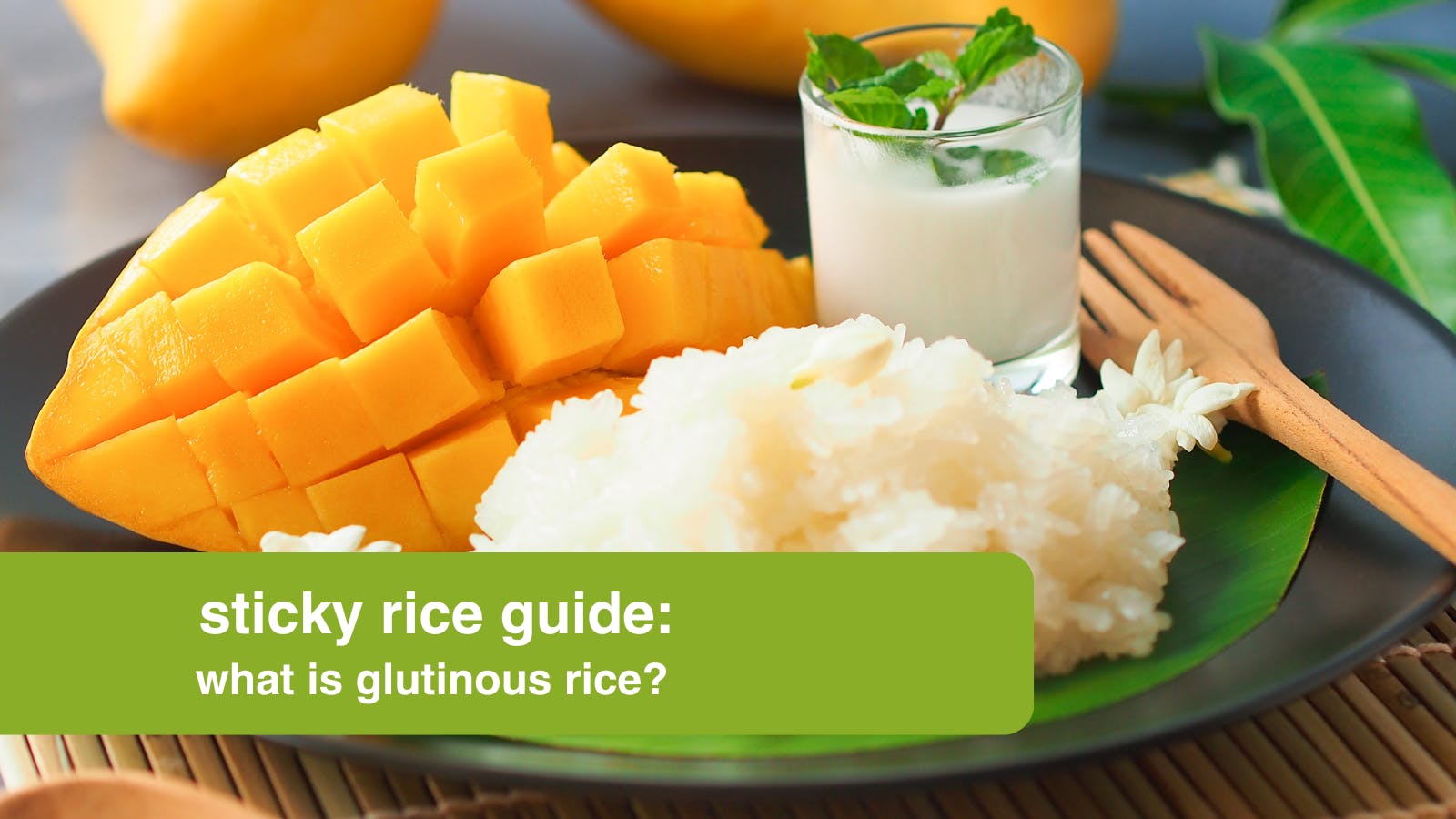your cart
Your cart is empty.
General Articles
Sticky Rice Guide: What is Glutinous Rice?
With its slightly sweet flavour and succulent chewy texture, it's no mystery why sticky rice is so beloved! We break down what's so special about this distinctive rice variety.

Rice is a staple grain in many Asian countries, and it comes in all sorts of varieties – think basmati, jasmine, arborio, long-grain, white rice and brown rice. But among the abundance of different rice types, one versatile option, celebrated for its unique texture and sweetness, stands out as a long-standing favourite – sticky rice!
What is Sticky Rice?
Rather than just being the name of a dish, sticky rice refers to a very particular kind of rice. It is also known as sweet rice, mochi rice or glutinous rice. It is characterised by its distinctive soft and sticky texture when cooked, as well as a slightly sweeter flavour and more fragrant aroma than regular white rice.
The versatile characteristics of sticky glutinous rice mean that it is often used in both sweet and savoury dishes from a range of East Asian cuisines. It is particularly popular in Thailand, Laos and Myanmar as well as Vietnam, China and Japan.
What Makes Sticky Rice Sticky?
The unique texture of the rice comes from a higher proportion of amylopectin. Amylopectin, a type of starch, is responsible for glutinous rice's gluey, sticky texture.
Unlike other types of rice, glutinous/sticky rice also contains very little (close to zero) amylose, a different type of starch that is responsible for the firm and fluffy texture of other rice types, including long-grain varieties like basmati.

Is Glutinous Rice Gluten Free?
Yes, despite its somewhat misleading name, glutinous rice is gluten-free. The term ‘glutinous’ refers to sticky rice's glue-like consistency, not the gluten protein found in wheat.
What Does Sticky Rice Taste Like?
Sticky rice is very dense and chewy, with a naturally sweeter flavour than other types of rice, making it an essential ingredient for all sorts of Asian puddings, with mango sticky rice and glutinous rice balls being especially popular.
However, its sweetness isn’t overpowering, which makes it the perfect companion for other savoury dishes too.
Is Sushi Rice the Same as Sticky Rice?
While sushi rice can have a sticky texture, it is not the same type as glutinous rice. Both are forms of short-grain Japonica rice, but their starch composition is slightly different, leading sticky rice to have a chewier texture. Sushi rice has the ability to hold together, but without the same gluey consistency.
Is Jasmine Rice Sticky Rice?
Jasmine rice has a similar slight sweetness and fragrance to glutinous rice; however, they are not the same. Jasmine rice has a firm, fluffy texture with loose individual grains when cooked and is typically eaten as a side with curries or stews.
Jasmine rice is of the Indica variety rather than Japonica, which means the grains are longer and have less amylopectin starch, and therefore much less of that stickiness you get with glutinous rice.
Types of Sticky Rice
There are several different types of sticky rice that will yield slightly different results.
- Black/purple sticky rice: Popular in Southeast Asian cuisine for use in desserts like pulut hitam.
- Japanese sticky rice: A sweet rice also known as mochigame, used for making mochi and other desserts.
- Thai sticky rice: Sometimes, a slightly longer-grain rice is used, and it has a floral aroma.

How to Make Sticky Rice
Cooking rice is an art form, and sticky rice is no different. The key to getting the perfect texture is to properly soak the rice for several hours before cooking. Then, many tout steaming as the best way to cook the rice, although it is possible to boil it on the hob or cook it in a rice cooker.
For top tips on making your delicious sticky rice, check out our guide.
What to Eat With Sticky Rice
Thanks to its versatility, sticky glutinous rice pairs well with any number of dishes, from curries, grilled or fried meat dishes, stews and stir fries to salads, dumplings and even fruits.
Glutinous rice with Chinese sausage is a popular combination. For more inspiration for tasty dishes to enjoy sticky rice with, see our range of recipes.
Frozen glutinous rice balls provide another delicious and convenient way to enjoy sticky rice.

Is Sticky Rice Good For You?
Sticky can be a good part of a healthy, balanced diet, but as with anything else, it’s best to eat in moderation.
Some studies have indicated that sticky rice may help with improving bone density, reducing inflammation, improving heart health and reducing oxidative stress. It also contains vitamins B and D and the minerals potassium, phosphorus, and selenium, which can support health when eaten as part of a balanced diet.
Where to Buy Sticky Rice?
Need to stock up on the best rice options? Check out our full selection of Asian rice and grains, including handy pages from 1kg up to 10kg, perfect for all your culinary creations.
this site uses cookies
We and our advertising partners use cookies on this site and around the web to improve your website experience and provide you with personalised advertising from this site and other advertisers. By clicking allow, you accept the placement and use of these cookies for these purposes. Learn More





